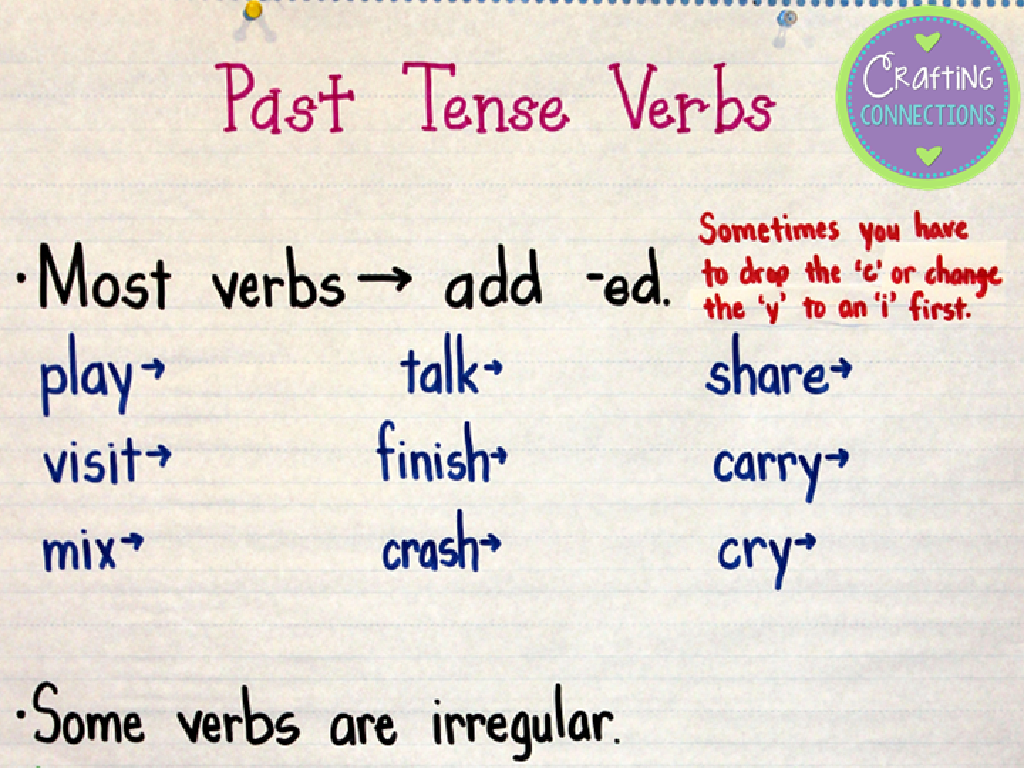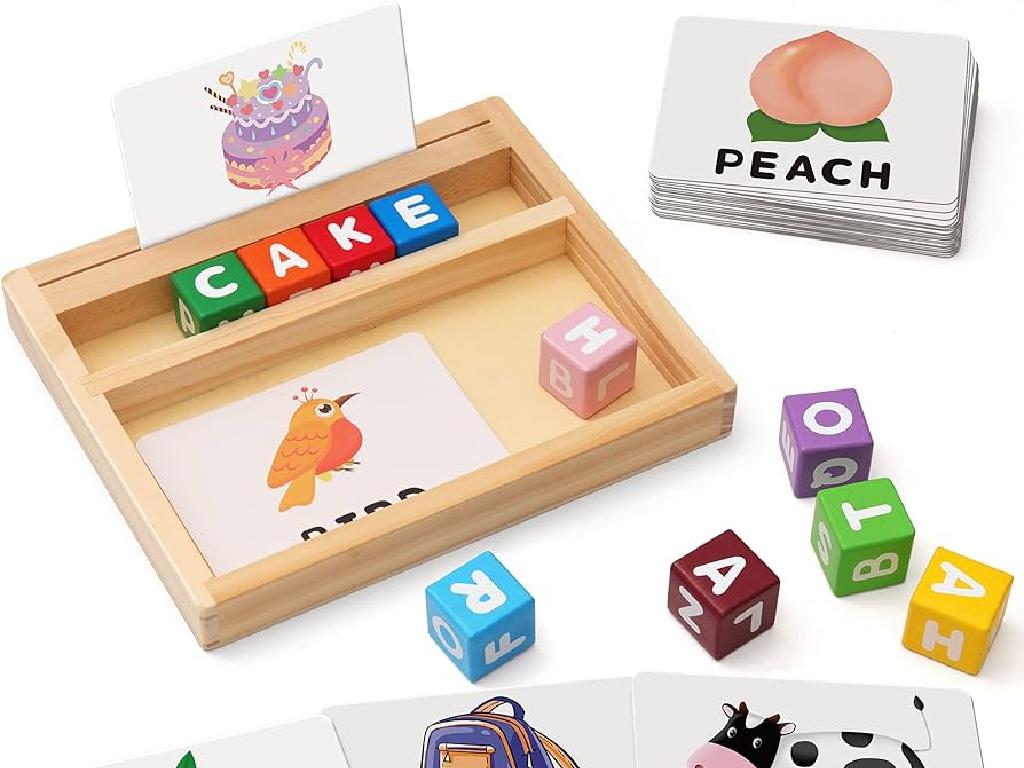Calculate Distance From Velocity And Time
Subject: Science
Grade: Eighth grade
Topic: Chemical Reactions
Please LOG IN to download the presentation. Access is available to registered users only.
View More Content
Chemical Reactions & Motion
– Understanding chemical reactions
– A process where substances change into new ones
– Reactions in daily life
– Cooking, rusting, and digestion involve chemical reactions
– Relation to motion
– Motion principles apply to particles in reactions
– Calculating distance
– Use the formula: distance = velocity x time
|
Begin with a basic definition of chemical reactions, emphasizing the transformation of substances. Highlight how these reactions are not just lab phenomena but are also part of everyday life, such as in cooking, rusting of iron, and the digestive process. Bridge the concept of chemical reactions to the principles of motion, explaining that particles in a reaction move and collide, which can be analyzed with physics. Introduce the formula for calculating distance from velocity and time as a fundamental concept that applies to the movement of particles in reactions. This will set the stage for understanding how motion is integral to chemical processes.
Understanding Velocity
– Define velocity
– Velocity: speed in a specific direction, e.g., 20 mph north
– Speed vs. velocity
– Speed is scalar; velocity is vector with magnitude and direction
– Everyday examples of velocity
– Driving a car, throwing a ball, or a river’s flow
|
This slide introduces the concept of velocity, which is a fundamental term in physics, distinct from speed. Velocity is defined as the rate at which an object changes its position in a specific direction, making it a vector quantity. It’s important to clarify the difference between speed (a scalar quantity that does not involve direction) and velocity. Use relatable examples such as driving a car at a certain speed in a particular direction, the trajectory of a thrown ball, or the direction of a river’s flow to illustrate the concept of velocity. This will help students understand how velocity applies to real-world scenarios and sets the stage for learning how to calculate distance using velocity and time.
Understanding Time in Physics
– Time as a measurable quantity
– Time’s role in distance calculation
– Distance = Velocity x Time. Time is crucial for accurate distance.
– Real-life time measurement
– Examples: Tracking sprinters’ speed, timing a rocket launch.
– Practice problems
– Solve for distance given velocity and time.
|
This slide introduces the concept of time as a fundamental measurable quantity in physics, crucial for various calculations, including distance. Emphasize the importance of time in the formula for calculating distance, where distance is the product of velocity and time. Provide real-life examples where precise time measurement is essential, such as in sports or space exploration. Conclude with practice problems to apply the concept of time in calculating distance, reinforcing the lesson with hands-on learning. This will help students grasp the practical applications of time measurement in everyday scenarios and scientific experiments.
Calculating Distance in Motion
– Distance = Velocity x Time
– Units: meters, m/s, seconds
– Distance in meters, velocity in meters per second (m/s), and time in seconds.
– Rearrange formula for velocity
– To find velocity: Velocity = Distance / Time
– Rearrange formula for time
– To find time: Time = Distance / Velocity
|
This slide introduces the fundamental formula for calculating distance based on velocity and time, which is a key concept in physics, not chemical reactions. Students should understand that distance is the total length of the path traveled by an object, velocity is the speed of the object in a given direction, and time is the duration over which the motion takes place. Emphasize the importance of consistent units when performing calculations. Additionally, demonstrate how to rearrange the formula to solve for velocity (speed) if distance and time are known, and for time if distance and velocity are known. Provide examples and practice problems to help students become comfortable with these calculations.
Calculating Distance Using Velocity and Time
– Example: Distance from velocity & time
– If a car travels at 60 mph for 2 hours, how far does it go?
– Step-by-step calculation process
– Multiply velocity (60 mph) by time (2 hours) to find distance.
– Comprehending the calculated distance
– The car travels 120 miles; distance shows how far it has moved.
– Implications of the result
– Understanding distance helps in planning trips & managing time.
|
This slide aims to solidify the students’ understanding of how to calculate distance when velocity and time are known, using the formula: distance = velocity x time. Start with an example problem, such as a car traveling at a constant speed, and guide the students through the multiplication process to find the total distance traveled. Emphasize the real-world application of this calculation, such as determining how far a vehicle will travel in a given amount of time, which is crucial for trip planning and time management. Encourage students to think about how different velocities or time periods would change the distance, reinforcing the concept that distance is directly proportional to both velocity and time.
Calculating Distance: Practice Problems
– Work on practice problems together
– Discuss problem-solving strategies
– How to set up the formula: distance = velocity x time
– Encourage reasoning explanations
– Students to articulate their thought process
– Review and clarify any doubts
– Address specific student questions and misconceptions
|
This slide is dedicated to engaging students with hands-on practice problems to solidify their understanding of calculating distance using the formula distance = velocity x time. Start by working through problems as a class to demonstrate the process. Encourage students to discuss their approaches to solving these problems, fostering a collaborative learning environment. It’s crucial to prompt students to explain their reasoning behind each step, which reinforces their comprehension and allows for peer learning. As students work through the problems, circulate the room to provide individual support, and conclude the activity with a review session to clarify any doubts and correct misconceptions. This interactive approach helps students to become more confident in applying the formula and understanding the concept of motion in a physical context.
Class Activity: Velocity Calculation
– Measure a set distance
– Time the travel duration
– Calculate velocity using formula
– Use formula: velocity = distance/time
– Discuss findings in groups
– Share observations, compare results
|
This class activity is designed to provide hands-on experience with the concept of velocity. Students will work in groups to measure a predetermined distance in the classroom or schoolyard. They will then time how long it takes an object or person to travel that distance. Using the formula for velocity (velocity = distance/time), they will calculate the speed of the moving object or person. After the calculations, students will engage in a group discussion to share their findings, compare results, and understand the practical application of the formula. Possible variations of the activity could include using different distances, timing each other, or using various objects to understand how mass or shape affects velocity. The teacher should ensure that all students are actively participating and encourage them to consider factors that might affect their measurements, such as human error or environmental conditions.
Wrapping Up: Distance, Velocity, and Time
– Recap: Distance = Velocity x Time
– Significance in chemical kinetics
– Understanding this concept is crucial for grasping reaction mechanisms.
– Applying the formula in experiments
– Example: Calculate distance traveled by a particle in a reaction over time.
– What’s next: Reaction Rates
|
As we conclude today’s lesson, it’s important to reinforce the distance formula and its relevance to chemical reactions, particularly in the study of chemical kinetics. Understanding how to calculate the distance a particle travels using its velocity and time is fundamental in predicting how fast a reaction will occur. This concept will be applied in future experiments where students will calculate reaction rates. The next lesson will delve deeper into reaction rates, exploring how different factors like temperature and concentration affect the speed of chemical reactions.
Homework: Mastering Distance Calculations
– Solve assigned practice problems
– Create your own velocity-time problems
– Think creatively and apply what you’ve learned to make new problems
– Review tonight’s concepts
– Go over the distance formula and example problems from class
– Get ready for the next class
|
This homework assignment is designed to reinforce the students’ understanding of calculating distance using velocity and time. Provide a set of practice problems that vary in difficulty to cater to all students. Encourage them to create their own problems, which will help them think critically about the concepts taught in class. Remind them to review the distance formula (Distance = Velocity x Time) and the examples worked on in class to ensure they are well-prepared for the next lesson. This exercise will also help them to better retain the information and apply it in different contexts. For the next class, hint that they will be applying these concepts to new situations, so a solid understanding is crucial.






